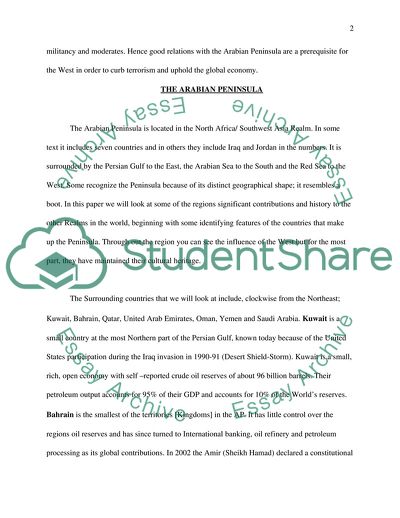The Mystery of the Arabian Peninsula Essay Example | Topics and Well Written Essays - 3250 words. https://studentshare.org/geography/1713454-the-arabian-peninsula
The Mystery of the Arabian Peninsula Essay Example | Topics and Well Written Essays - 3250 Words. https://studentshare.org/geography/1713454-the-arabian-peninsula.


